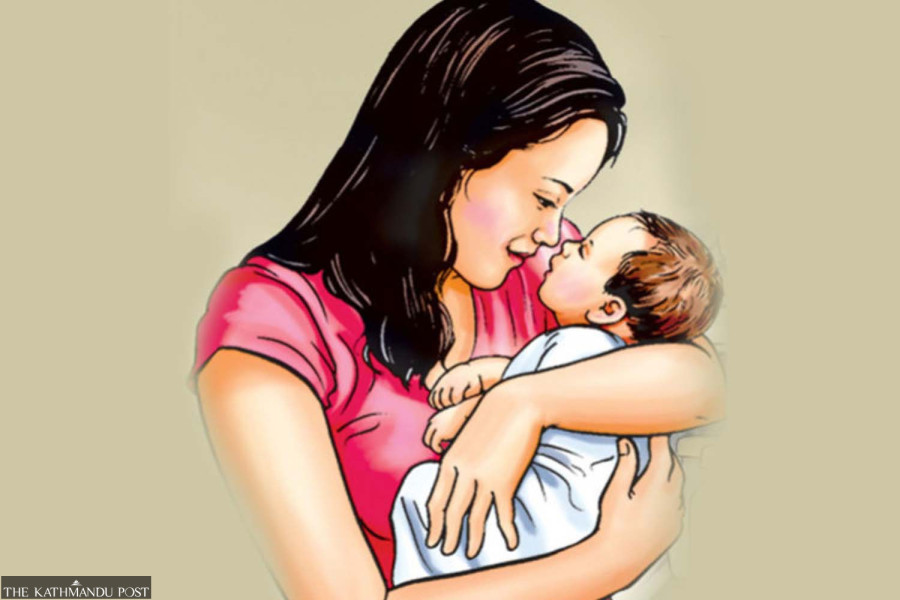Health
Nurses deployed at 18 hospitals to promote exclusive breastfeeding
A 2022 survey showed a steady decline in breastfeeding rates, from 70 percent in 2011, to 56 percent in 2021.
Post Report
In a bid to promote exclusive breastfeeding practices, the Ministry of Health and Population has hired 36 staff nurses for deployment to 18 federal and provincial hospitals across the country.
Officials hope that deployment of specially trained nurses at federal and provincial hospitals will help promote exclusive breastfeeding practices, which have been steadily declining in recent years.
“Two internal experts have been appointed to train child health specialists, who will later train the staff nurses to promote exclusive breastfeeding,” said Lila Bikram Thapa, chief of the Nutrition Section at the Family Welfare Division, under the Department of Health Services. “We are also planning to hire breastfeeding counsellors at district hospitals in future.”
Studies show that Nepal's exclusive breastfeeding rate has steadily declined over the years. According to the Nepal Demographic and Health Survey 2022, exclusive breastfeeding dropped consistently from 70 percent in 2011 to 56 percent in 2021.
The report also showed that bottle-feeding practices started in health facilities. It stated that 22 percent of children born in a health facility receive mixed milk feeding (breast milk and fresh, packaged, or powdered animal milk or infant formula), compared to 12 percent of those born at home.
Bottle feeding is not recommended, as the nipple on a feeding bottle is prone to contamination and increases the risk of diseases in children, according to the World Health Organisation.
What concerns health officials is that more educated and well-off mothers are less likely to breastfeed their babies, as studies show.
“Hospitals complain that they do not have staff to promote exclusive breastfeeding within their facilities,” said Thapa. “We hope that deploying staff nurses from the centre will help address this staff crunch.”
Officials said that the United Nations Children’s Fund has supported the government in hiring staff for exclusive breastfeeding and bringing in international experts to prepare master trainers.
The report shows that the proportion of children who are bottle-fed increases with mothers’ education, rising from 12 percent among children of mothers with no education to 49 percent among those whose mothers have more than a secondary education. Bottle-feeding is most common in the highest wealth quintile—46 percent—and least common in the lowest wealth quintile—11 percent.
Among the seven provinces of Nepal, exclusive breastfeeding rates are the highest in Sudurpaschim and Karnali provinces—74 percent each—and lowest in Lumbini Province—36 percent.
The proportion of children aged 0–5 months who are exclusively breastfed fluctuates across wealth quintiles. The proportion is highest in the lowest wealth quintile—64 percent—and lowest in the highest quintile—44 percent.
The proportion of children who are bottle-fed is higher in urban areas, 26 percent, than in rural areas, 15 percent. The use of a bottle with a nipple is lowest at 11 percent in Karnali Province, 12 percent in Madhesh Province and the highest at 43 percent in Bagmati Province.
Doctors recommend breastfeeding for the first two years of a baby’s life or longer, as breast milk lowers the risk of illness in children, promotes their recovery during illness, and provides important nutrients for healthy growth and development.
According to them, longer durations of breastfeeding have many health benefits for women, including reduced risks of certain breast and ovarian cancers and diabetes.
Nepal had committed to increasing the exclusive breastfeeding rate to more than 90 percent by 2030, but the rate declined from 70 percent in 2011 to 66 percent in 2016 and to 56 percent in 2022.




 16.12°C Kathmandu
16.12°C Kathmandu












%20(1).jpg&w=300&height=200)
